Forest Health
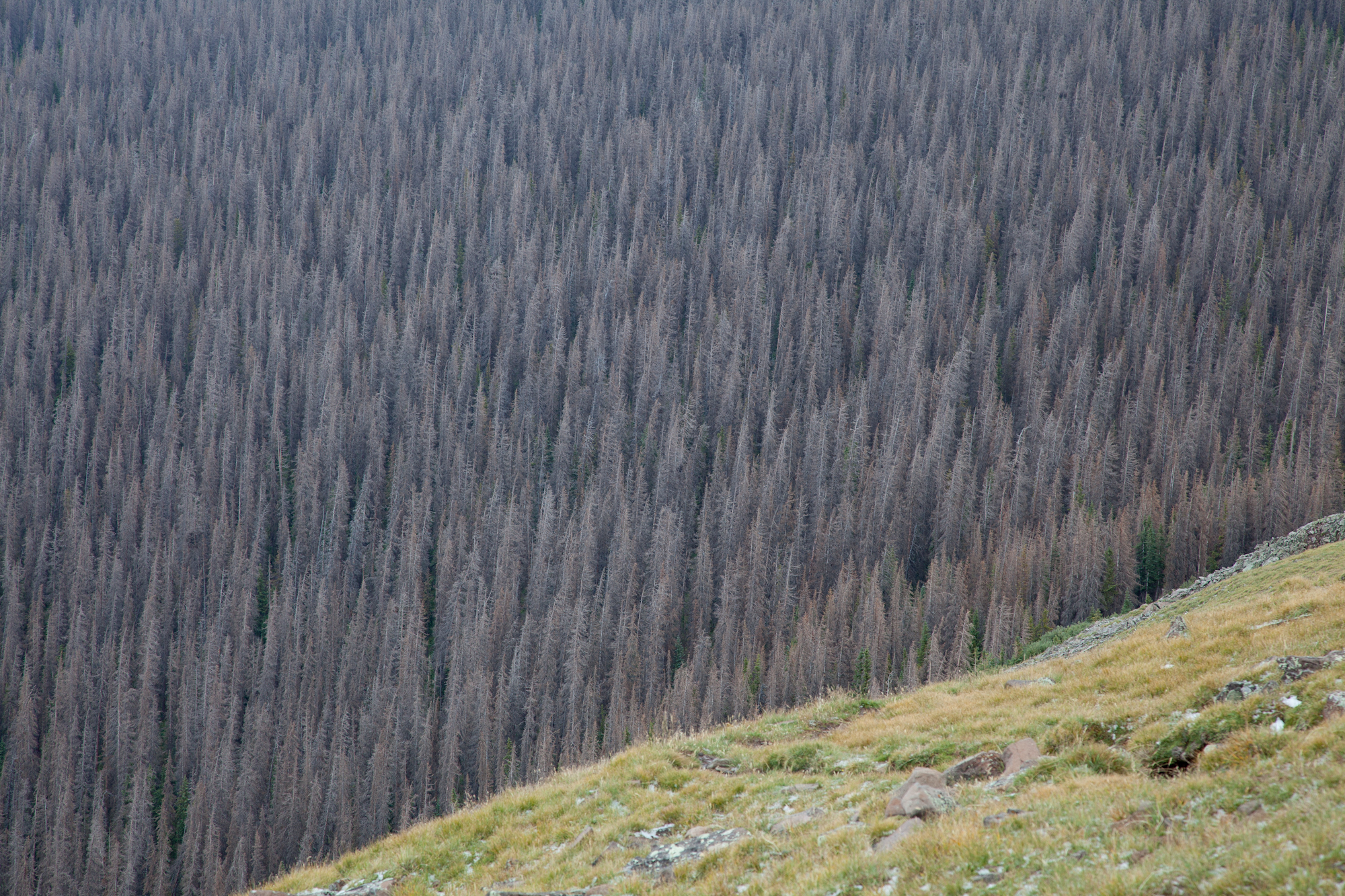
Many folks visiting the Rio Grande National Forest are noticing a big change in the high elevation forests as literally millions of trees are succumbing to the spruce bark beetle. A total of 617,000 acres of spruce-fir forest have been infested by spruce beetles since 1996 and the beetles are continuing to spread.
The native spruce beetle primarily attacks mature Engelmann spruce, although it sometimes infests blue spruce too. The tiny beetle is killing trees down to 5 inches in diameter Luckily, smaller spruce and all sizes of fir will continue to survive, and they will provide the base for creating the next forest.
For more current information on spruce beetle infestations and forest health visit the following links from the Colorado State Forest Service and the Rocky Mountain Region of the US Forest Service.
Spruce Beetle
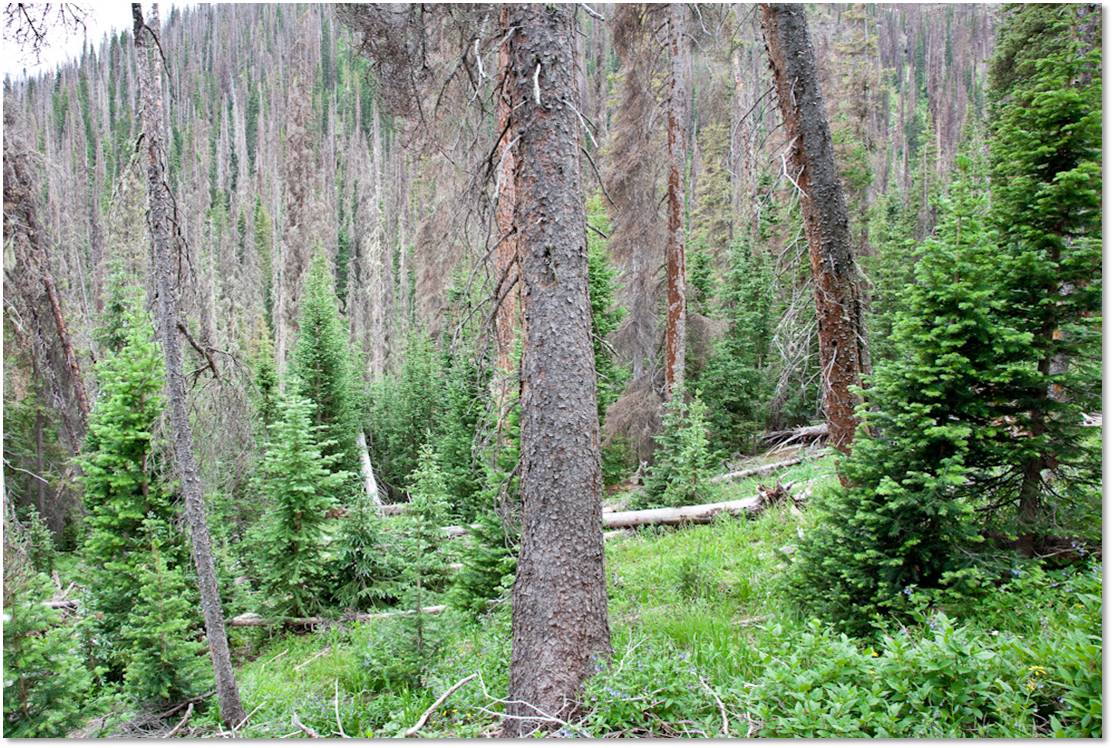
The spruce beetle infestation is still spreading through the Rio Grande National Forest (RGNF). Each year aerial surveys detect the spread of spruce beetle infestations. Over 617,000 acres have been infested since 1996. The rate of annual spread had declined from its peak on the RGNF because most of the spruce-fir forests and the Engelmann spruce components of mixed conifer forests have been infested.
Not all areas are infested equally. In some areas, all the spruce trees larger than 5 inches in diameter have been killed by spruce beetles. In other areas, there is a mixture of dead and living spruce trees of all sizes.
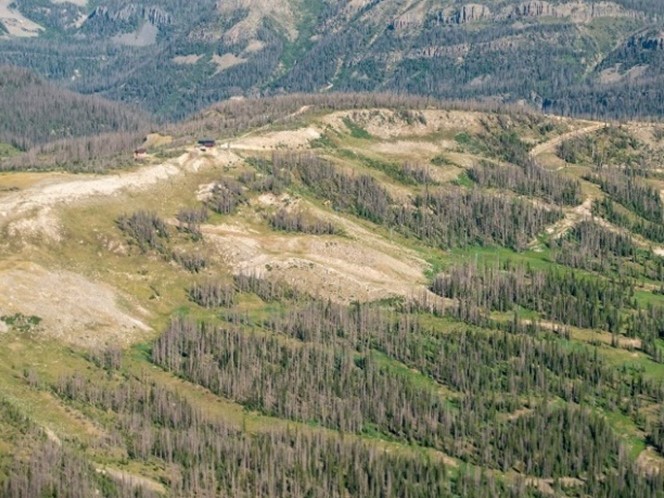 Subalpine fir and many of the young spruce will survive the infestation. These trees will provide the base population for creating the next spruce-fir forests. Additionally, seeds collected from live Engelmann spruce on the RGNF from before the beetle epidemic are used to grow seedlings to be planted in the West Fork Complex burned areas and in harvested areas where there is not adequate natural regeneration.
Subalpine fir and many of the young spruce will survive the infestation. These trees will provide the base population for creating the next spruce-fir forests. Additionally, seeds collected from live Engelmann spruce on the RGNF from before the beetle epidemic are used to grow seedlings to be planted in the West Fork Complex burned areas and in harvested areas where there is not adequate natural regeneration.
The RGNF continues to offer timber sales in designated timber management areas to salvage dead and dying spruce while the trees can still be used for commercial sawtimber.
In the Rocky Mountains, spruce beetles primarily infest Engelmann spruce which grows in our high elevation forests. Spruce beetles will infest blue spruce, but it is not as common. Some blue spruces have been infested on the RGNF.
Photo: Wolf Creek Pass with spruce beetle-kill, 2020, Colorado State Forest Service
The large number of dead trees in the forest may lead people to believe that there is an increased chance of a severe wildland fire. A closer look reveals that is probably not the case. Large fires are somewhat rare in the high elevation subalpine forest where Engelmann spruce and subalpine fir grow. Some research indicates that there is no difference in the chance of a wildland fire starting in a green or beetle-killed subalpine forest. Different fuel arrangements complicate how wildfires burn in areas with beetle-killed trees.
Initially, when the dry, dead needles of beetle-infested trees are still on the branches, there may be an increased risk of fire burning through the tops of the trees. When needles fall off the trees, they quickly absorb moisture from the ground and decompose within a few years. In dry conditions, the fallen needles may help carry a ground fire, but the tops of standing bare trees are less likely to carry a crown fire than those of living trees. Once the trees fall to the ground, a fire burning through the area may burn very hot and damage the soil, but the risk of a fire starting is no greater than when the trees were still alive.
Many aspects contribute to wildfire behavior. The arrangement and moisture content of fuels as well as wind conditions affect wildfire behavior.
Safety is a concern in the beetle-killed forests because dead trees eventually fall. Although spruce trees may stand for decades after they die, many have blown down. There are a number of factors that affect the risk of trees falling, such as soil type, soil moisture, topography, and wind. In some situations, green, living trees may be more susceptible to blowing down than the dead trees because their needles catch more wind. It is difficult to predict when specific trees will fall, so it is highly recommended that people take extra precautions when visiting beetle-killed forests.
Precautions include:
- Do not hike, ride, or drive in beetle-killed forests on windy days.
- Do not park or set up a tent near tall trees in a beetle-killed forest.
- Carry a saw or an axe when driving on roads or trails that go through beetle-killed forest.
Aspen Defoliators
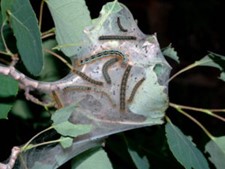 The two most common defoliators of aspen on the Rio Grande National Forest are tent caterpillar and aspen tortrix. Defoliators are insects that eat the leaves of trees and shrubs. Tent caterpillars eat the leaves and build silken tent-like structures in trees and shrubs. The large aspen tortrix eats the leaves of aspen trees as larvae.
The two most common defoliators of aspen on the Rio Grande National Forest are tent caterpillar and aspen tortrix. Defoliators are insects that eat the leaves of trees and shrubs. Tent caterpillars eat the leaves and build silken tent-like structures in trees and shrubs. The large aspen tortrix eats the leaves of aspen trees as larvae.
Aspen defoliators feed on the leaves of aspen trees and other broad-leafed plants. When populations are large enough, entire stands of aspen trees may be defoliated. As long as the aspen have sugar reserves in their root systems, the trees will sprout new leaves following defoliation. The new leaves are generally smaller than those that grew in the spring, but they can still make for magnificent fall colors.
Individuals and clones of aspen trees may begin to die after several years of repeated defoliation as the sugar reserves are used up or from other insects and diseases attacking the trees. Typically, populations of the defoliators crash before there is significant aspen mortality.
Photo: Western tent caterpillar, Colorado State Forest Service
Western Spruce Budworm
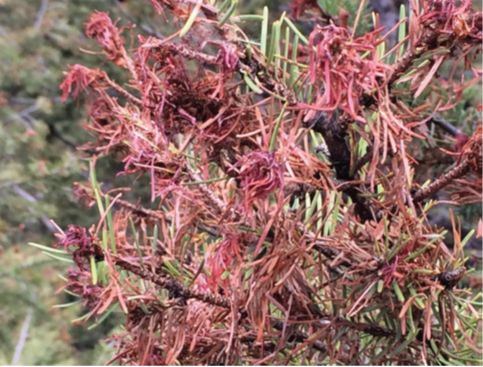 While spruce budworm activity can vary greatly from year to year, infestations tend to be chronic on the Rio Grande National Forest, that is, there are always areas on the Forest with budworm activity.
While spruce budworm activity can vary greatly from year to year, infestations tend to be chronic on the Rio Grande National Forest, that is, there are always areas on the Forest with budworm activity.
The larvae of spruce budworms are defoliators that feed on the new needles of white fir, Douglas-fir, spruce, and subalpine fir. Brown, needleless branch tips on green trees are a telltale characteristic of a spruce budworm infestation. Individual coniferous trees may die within stands infested by spruce budworm for several years.
Photo: Western Spruce Budworm, Dan West, Colorado State Forest Service

